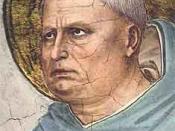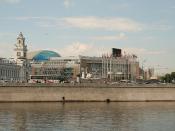The High Middle Ages in Europe was a time of growth and expansion, not only in terms of population, but also in terms of ideas. While the population in Europe increased from 38 million to 74 million people between 1000 and 1300 AD., new developments and ideas involving the economy, government, and religion caused almost every aspect of daily life to change.
Many factors contributed to the population explosion in Europe, including increased security and decline of slavery. The most important factor, however, was expansion of agricultural production, for without an ample supply of food, a large population could have never survived. Heavy iron plows, the three-field system, and the use of horses all increased food production capabilities immensely, relieving much of the European population of the burden of producing their own food.
Money began to circulate more rapidly as merchants and craftsman could now buy their food and other necessities.
The social position of the merchant, which had been of a lower class than the serf, improved greatly as many merchants began to settle in the ever growing cities of Europe in order to conduct their business. Artisans and craftsman also began to move into Europe's larger towns and cities, forming guilds that brought them together with other townspeople in order to satisfy their common needs. By the thirteenth century, there were guilds for each individual craft as well as for each specialized group of merchants. Before long, guilds came to regulate and monitor almost every aspect of the manufacturing and distributing process, and cities such as Venice and Flanders were grew to be commercial giants.
Politically, the High Middle Ages saw the spread of feudalism as well as a more centralized government. The lords included kings, dukes, barons, counts, viscounts, and even some bishops and archbishops, and were...


